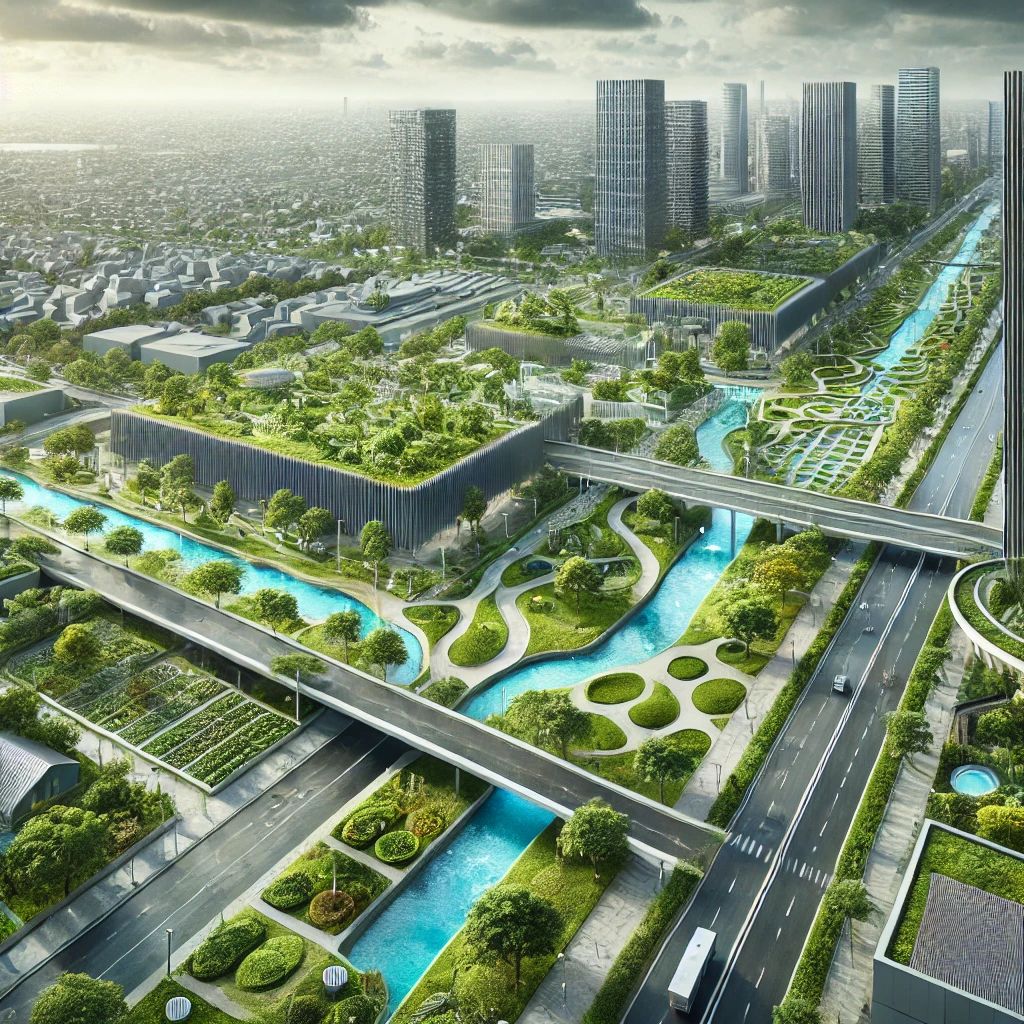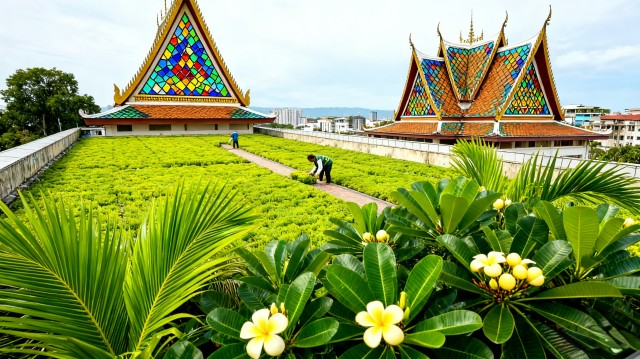Sponge Cities: Different Names, Applications, Development History, and Future Prospects
2024-08-09
As global climate change and urbanization
accelerate, many cities face challenges related to rainwater management and
flooding. The concept of sponge cities has gained widespread attention and
application as an innovative urban water management approach. This article
explores the different names for sponge cities in various countries, their
specific applications, development history, and future prospects. 
Different Names for Sponge Cities
l China: Known as "Sponge City,"
this concept aims to enhance urban planning and construction management to
utilize the impact of buildings, roads, green spaces, and water systems for
rainwater collection and utilization (Wikipedia) (Frontiers).
l Australia and the Middle East: Referred
to as "Water Sensitive Urban Design" (WSUD), this approach emphasizes
integrating rainwater management into urban planning to protect and utilize
natural water resources (Urban Policy Insights) (Frontiers).
l United Kingdom: Known as "Sustainable
Urban Drainage Systems" (SuDS), this method primarily employs green
infrastructure such as rain gardens and permeable pavements to manage rainwater (Urban Policy Insights).
l United States (Seattle): Called
"Natural Drainage Systems" (NDS), examples include the South Thornton
project, which uses vegetation and natural soil layers to absorb and purify
rainwater (ArchDaily).
l Germany: While the concept is also
referred to as "Sponge City," it is integrated with other urban water
management methods, such as in Berlin, where green infrastructure and permeable
surfaces manage rainwater (Urban Policy Insights).
Applications of Sponge Cities
l China: Initiated in 2015, China's sponge
city projects are supported by national policies. Pilot cities like Shanghai,
Shenzhen, Tianjin, and Beijing are leading the way in implementing sponge city
strategies (Wikipedia).
l Australia: WSUD is widely applied in
urban planning, especially in new communities and infrastructure projects,
using rain gardens, green roofs, and permeable pavements to improve urban
rainwater management (Urban Policy Insights).
l United Kingdom: SuDS is applied in urban
construction and redevelopment projects. For example, the King's Cross
redevelopment project in London uses green spaces and rain gardens for
efficient rainwater management (Urban Policy Insights).
l United States: In Seattle, NDS projects
like South Thornton aim to manage urban rainwater through natural means,
enhancing green spaces and improving water quality (ArchDaily).
l Germany: Berlin's sponge city projects,
such as the Rummelsburg development, employ green roofs, permeable pavements,
and rain gardens to manage urban rainwater (Urban Policy Insights).
Development History
The concept of sponge cities originated as
a response to the limitations of traditional urban drainage systems, which
quickly discharge rainwater through pipes and channels, often causing
downstream flooding and wasting water resources. Sponge cities, however,
emphasize local absorption and utilization of rainwater, reducing flood risks
and improving water resource efficiency.
In China, the sponge city concept was first
introduced in 2014 and quickly gained traction. The Chinese government set
specific goals and policies to promote sponge city projects, aiming for 20% of
urban areas to meet sponge city standards by 2020 and increasing to 80% by 2030 (Wikipedia) (Frontiers).
Future Prospects
Sponge cities have a promising future as a
solution to urban water management challenges. With the increasing frequency of
extreme weather events due to climate change, the importance of sponge cities
in reducing flood risks, improving water quality, and enhancing urban
ecological environments will become more pronounced.
Future development of sponge cities will
likely focus on technological innovation and multidisciplinary collaboration.
Advanced sensors and data analysis technologies can improve the precision and
efficiency of rainwater management. Additionally, government and community
involvement and cooperation will be crucial for the success of sponge cities.
Conclusion
Sponge cities represent a green
infrastructure solution to urban water management problems. Although known by
different names and implemented in various ways, whether it's China's
"Sponge City," Australia's "Water Sensitive Urban Design,"
the UK's "Sustainable Urban Drainage Systems," or the US's
"Natural Drainage Systems," the core concept remains the same:
managing rainwater through natural means. As technology advances and policies
evolve, sponge cities will play an increasingly important role in global urban
development.

Tags: sponge city, Water Sensitive Urban Design, Sustainable Urban Drainage Systems, Natural Drainage Systems, urban water management, green infrastructure, climate change, rainwater management
AnteriorPromoting Sustainability with Green Roof Systems: Eco-Friendly Layered and Tray Solutions
PróximaStormwater Management Revolution: Comparing Permaovid and Hoensoey in Urban Sustainability
Message






